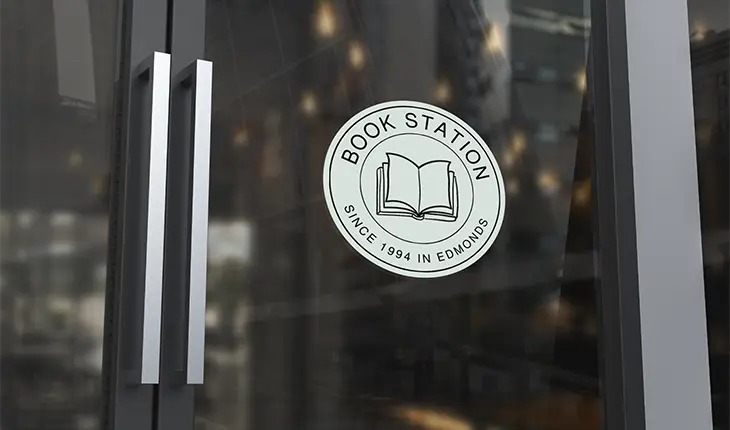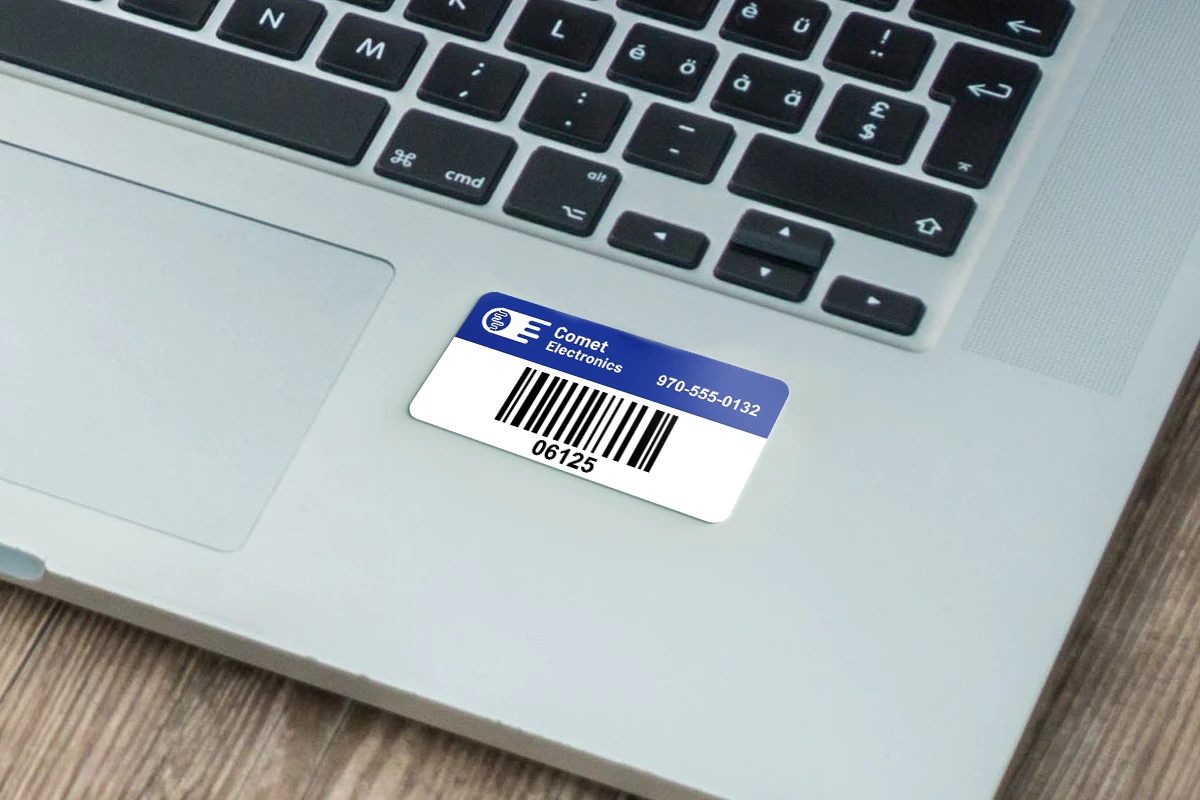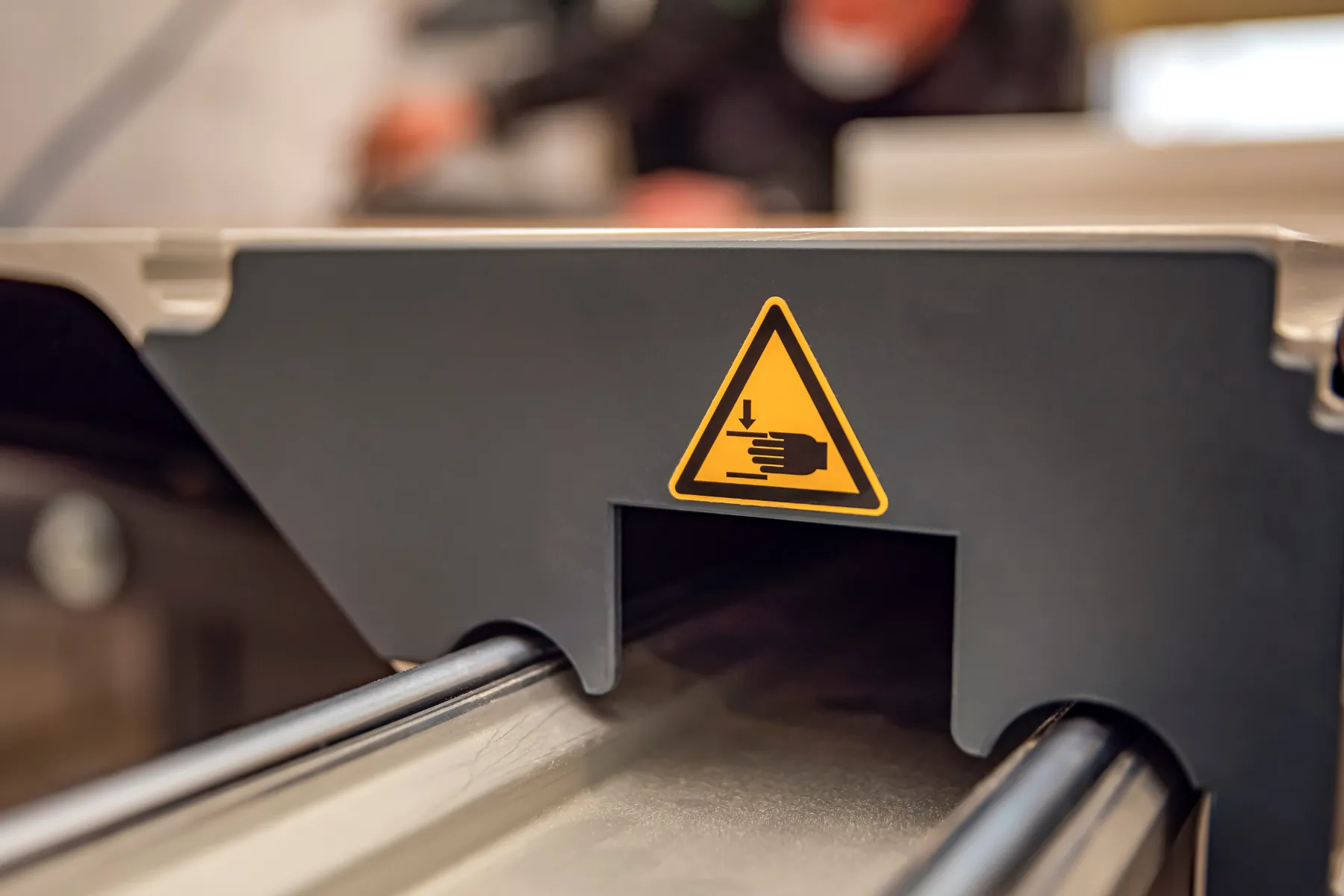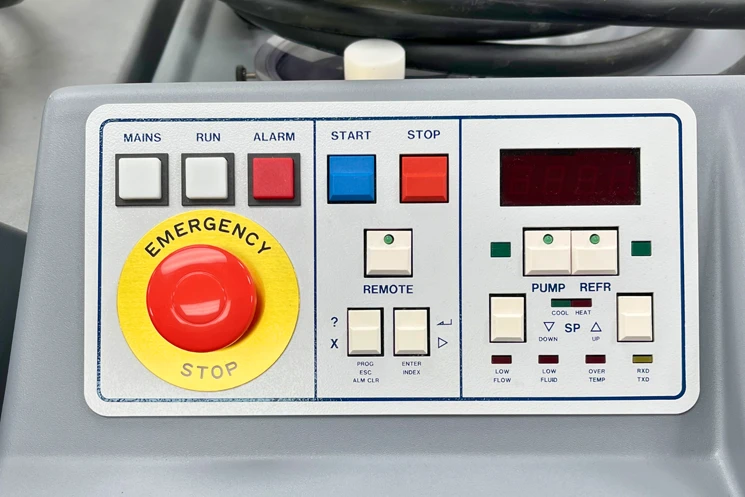When it comes to labeling, choosing between static cling decals and adhesive labels depends on your specific needs.
Whether you’re decorating windows, branding products, or organizing your space, each option offers unique benefits. Understanding the differences can help you make the best choice for your project.
In this blog, we’ll break down the advantages and limitations of both static cling and adhesive labels to help you decide which is the right fit for your needs.
What Are Static Cling Decals and How Do They Work?
Static cling decals are versatile, reusable, and leave no sticky residue. They work by using static electricity to adhere to smooth, non-porous surfaces. These decals are often used on windows, mirrors, and glass doors, but can also work on certain metal and plastic surfaces.
No Adhesive Needed: How Static Cling Decals Stay in Place
Unlike traditional stickers, static cling decals don’t rely on glue to stay in place. Instead, they cling to surfaces through static electricity.
Because there’s no adhesive involved, window static cling decals are easy to reposition or remove, making them perfect for temporary displays, promotions, or seasonal decorations.
Static cling decals are also great for situations where you need flexibility. If you want to change your design frequently without leaving behind any residue or damaging the surface, static clings are the ideal solution.
Best Surfaces for Applying Static Cling Decals
Static cling decals work best on smooth, flat surfaces. The most common surfaces for window static cling decals include:
- Glass windows or doors
- Mirrors
- Glossy plastic
- Smooth metal
Because static cling relies on surface contact to adhere, rough or porous surfaces like walls or wood are not ideal. It’s important to keep the surface clean and dust-free to maximize the effectiveness of the static cling.
What Are Adhesive Labels and How Do They Work?
In contrast to static cling decals, adhesive labels use a sticky substance on the back to stick firmly to surfaces. These labels are widely used for long-term applications where permanence and durability are important.
Types of Adhesives for Labels (Permanent, Removable, Repositionable)
Not all adhesive labels are created equally—there are different types of adhesives, each serving different purposes:
- Permanent Adhesive: These labels are meant to stick for the long haul. Once applied, they are difficult to remove without leaving some residue behind. They are ideal for labeling products, equipment, or areas where you need something to stay in place for an extended period.
- Removable Adhesive: Labels with removable adhesive are designed to stick well but can be peeled off without leaving a sticky residue. This makes them perfect for temporary uses like product promotions, shelf labeling, or event management.
- Repositionable Adhesive: These labels can be applied and reapplied multiple times without losing their stickiness. They are useful for scenarios where you may need to adjust or move the label during application.
Ideal Uses for Adhesive Labels
Adhesive labels offer versatility for both short-term and long-term applications. Some ideal uses for adhesive labels include:
- Product packaging and branding
- Shipping labels
- Organizing inventory or office supplies
- Warning or instruction labels on machinery
- Custom labels for food, cosmetics, or other consumer goods
Adhesive labels come in a variety of materials such as paper, polyester, and vinyl, making them adaptable for a wide range of environments and uses.
Comparing Durability and Application Flexibility
When to Choose Static Cling Decals for Temporary Use
If you’re looking for something that’s easy to apply and remove, static cling decals are your best bet for temporary applications. These decals excel in situations where you’ll need to frequently update or change the visuals, such as:
- Storefront window displays for seasonal promotions
- Temporary branding for events or conferences
- Personalizing glass surfaces without the commitment
Static clings are especially popular for businesses that change promotions or window displays often because they don’t damage surfaces and can be reused multiple times. Just peel them off, store them, and apply them again whenever you need them.
Why Adhesive Labels Are Best for Long-Term Applications
When permanence is key, adhesive labels are the right choice. If your labeling needs are more about durability than flexibility, adhesive labels offer a more secure bond. Applications where adhesive labels shine include:
- Product labeling for retail items
- Industrial labeling where labels need to withstand harsh conditions
- Security tags and equipment labeling that need to stay put for years
For applications where durability is a must, adhesive labels are typically made to endure wear and tear, exposure to water, UV light, and other environmental factors. Adhesive labels are a go-to for long-lasting solutions, especially if you need them to stick and stay.
FAQs
Can static cling decals be reused?
Yes, one of the best features of static cling decals is their reusability. As long as they are stored properly and the surface is clean, you can peel off and reapply static cling decals multiple times without losing their clinginess.
Do adhesive labels leave a residue when removed?
It depends on the type of adhesive. Permanent adhesive labels can leave some residue when removed, especially if they’ve been applied for a long time. However, removable adhesive labels are designed to come off cleanly, leaving no sticky residue behind.
Which option is more eco-friendly: static cling or adhesive labels?
Both options have eco-friendly versions depending on the material and intended use. Static cling decals can be reused, which reduces waste, making them a good option for short-term promotions.
Adhesive labels made from recyclable materials or biodegradable adhesives can also be an eco-friendly choice, especially when you need a longer-term labeling solution.
How to get static window clings to stick?
To make static window clings stick effectively, start by ensuring the window is squeaky clean. Use a window cleaner to remove dirt, dust, and smudges. Even a small amount of residue can stop clings from sticking well.
Once cleaned, spray the window lightly with water. This step helps the static clings stick better and gives you more control to smooth out any air bubbles.
Static clings are very easy to use. Just put the cling on a damp surface and press it down. Smooth it out from the center to the edges.
Window clings stick best on glass or other smooth surfaces, so avoid rough or textured areas. If the clings adhere poorly, try adjusting the moisture level or re-cleaning the surface.
Static clings are flexible, so you can move them easily. This makes them great for temporary displays, holiday decorations, or business promotions. With these simple steps, you’ll enjoy a smooth application that lasts!



